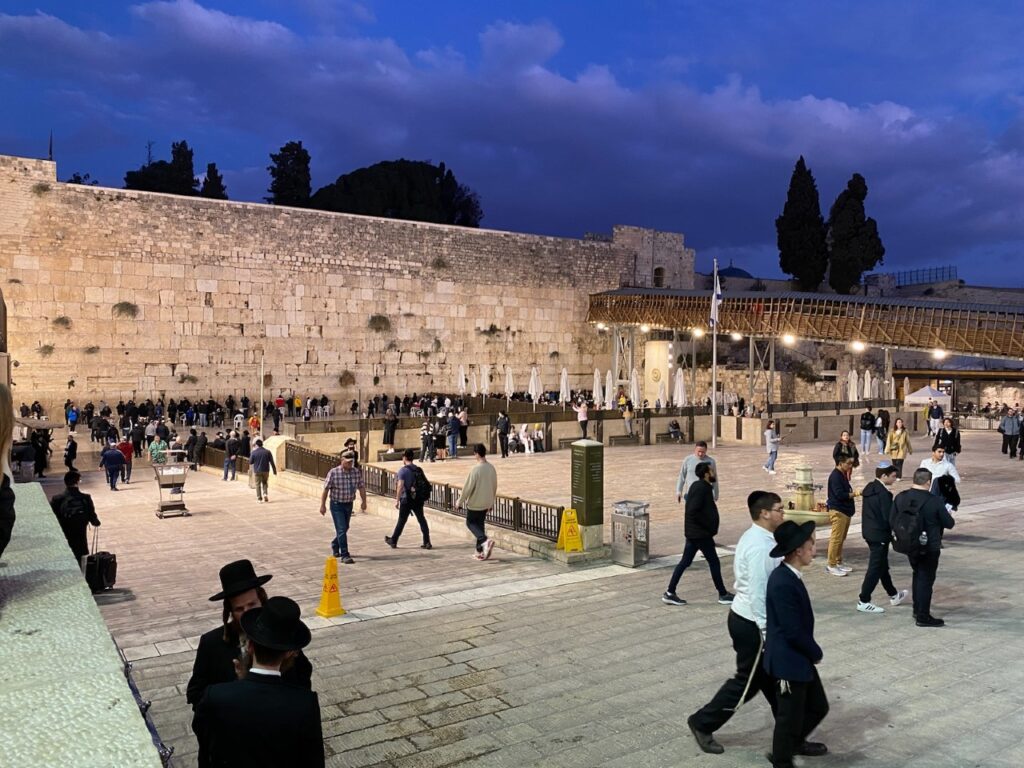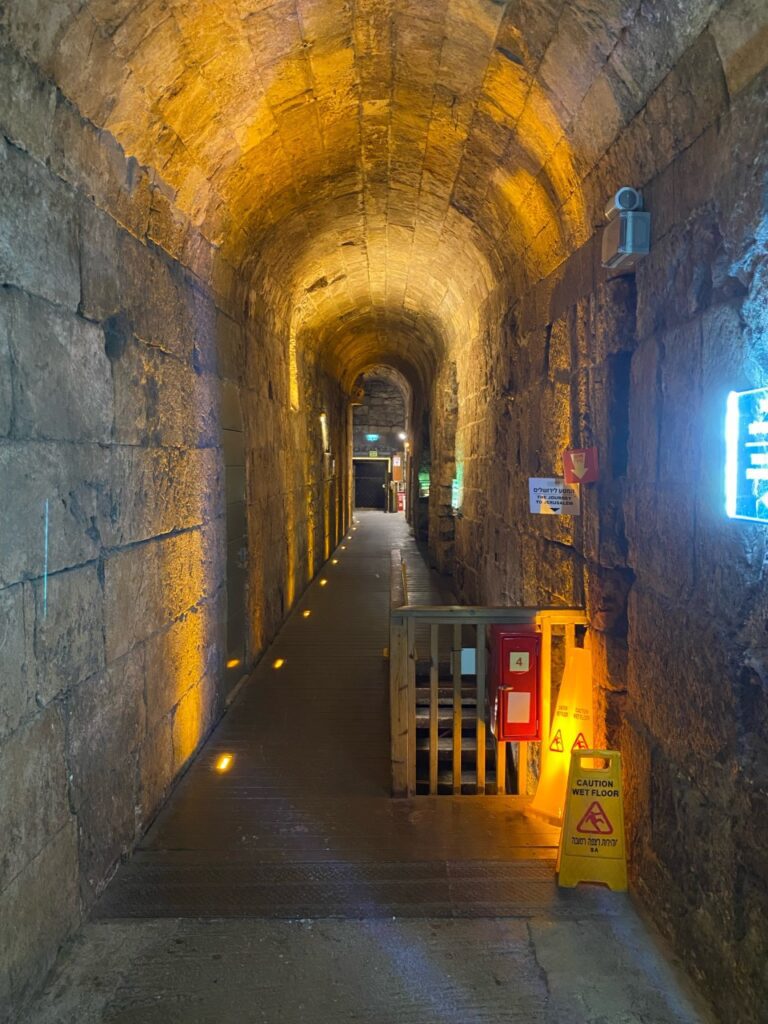Day Four Unlike Any Thanksgiving Before

The Waling Wall has two sections – one for men and the other for women.

Thursday marked the most untraditional of Thanksgivings. But what a day to be thankful for.
Our first stop after leaving the Dead Sea was Masada. If you don’t know the story, you would be hard pressed to find one with more drama, courage and sacrifice. If you do know the story and have never been, it’s this reporter’s opinion it is worth adding to the bucket list.
Briefly, Masada was a fortress on top of a mountain in the Judaean Desert of southern Israel. Herod, as in Herod the Great, built a royal citadel on it for his family. However, after he died, the Jews took back the mountain in a surprise attack and held on to it for years. But when Rome decided to retake the mountain, the almost 1,000 on top had a choice to make. It was clear they could hold on for a while, but at some point, Rome was going to win.

The tunnel at the base of the Western Wall is fascinating.
Elazar Ben Yair, according to multiple records, gave a stirring speech about the choice to live (and die) in freedom, or to live as slaves to the Romans. The Jewish people of Masada chose Freedom. So 10 numbers were drawn and the 10 men chosen were tasked with taking the lives of their fellow citizens. When that was done, lots were cast again and one man killed the other nine and then took his own life. When the Roman soldiers arrived the next day, they found almost 1,000 bodies and the Jewish people had a story for the millennium. Some two thousand years later, our tour guide said the Israeli military still says, “Masada, never again.”
From there it was a bus ride through the desert. We passed Bedouin encampments, a herd of perhaps 20 or 30 camels, multiple shepherds herding sheep and goats and even a small ibex – a relative of the deer family, from the looks of it.
We made a short stop at the Oasis of Ein Gedi, a place where David hid from Saul (Samuel 23) and wrote several Psalms while doing so.
We next went to Qumran, the area where the Dead Sea Scrolls were found – another breathtaking site. In 1947 ancient biblical texts were found inside old pottery in caves. The discovery changed – and confirmed – much of what we knew of the Bible. We were going to take a hike through the oasis, but a prediction of rain closed the area. Apparently, in the area there, it does not take a lot of rain to create flash floods down the mountain. A group of nine college kids were killed exactly that way in 2018.
Had the day ended there, it would have been a great one. It didn’t. Less than an hour later we went over a hill and there, in all its splendor, was the Holy City, Jerusalem – one of the oldest cities on the planet. We will spend the remainder of our trip here – and still not get to see everything. When you think about it, it’s the site Abraham thought he was supposed to sacrifice his son Isaac. David took the city with his army around 3,000 years ago. Jesus came into the city in a celebration that we now know as Palm Sunday. Pontius Pilate sentenced Jesus to die there – and indeed it is the city where he was crucified. The Jews built their temple there. The Muslims took over.
The events. The history. The magnitude.
Even the day before we arrived an incident of terrorism took place as a bomb killed a young teen and wounded almost two dozen others.
So with security heightened, we made our first stop the Western Wall – also known as the Wailing Wall. The base of the wall sees people – many Jews, yes, but people from all over – praying and leaving notes to God. And at the top lies at worst an enemy and at best an uneasy relationship with a neighbor, the Muslims. We were given time to pray if we wished – I did – and then went on a fascinating tour of the Western Wall Tunnels, a long and ancient tunnel that lies at the base of the Western Wall.
Hard to say if there are any non-believers in our tour group. But if there were, it’d be a bigger challenge to remain that way after everything we’ve seen. This visit takes events off the pages of the bible and makes them real. It’s history, plain and simple.
We have a little over two days left. We’ll visit Bethlehem where Jesus was born as well as explore further into the Old Town section of Jerusalem where Pilate’s order to crucify Jesus was carried out. As our guide said, all these amazing things happened and came together right around the time Jesus was here – it has to mean something, doesn’t it?
Sagamore News Media’s Tim Timmons is on a pilgrimage to Israel and the Holy Land. He will be writing occasionally during the trip. Timmons can be contacted at ttimmons@thetimes24-7.com.
